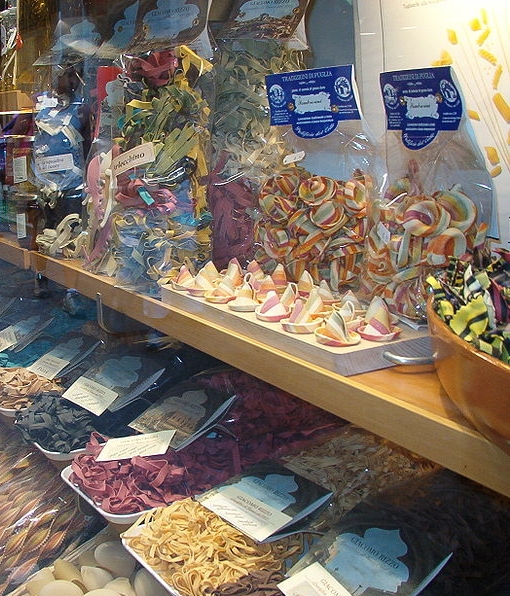Pesto - The Green Goddess
Someone once told me that you know you've been Italianised when you start considering which sauce/pasta combo is appropriate.
Does tagliatelle work well with a chunky ragu? Should I pair rigatone with pesto? While there are no hard and fast rules, some pastas lend themselves better to certain sauces than others.
Shapes (think farfalle and fusilli) and hollow tubes (tortiglione or rigatone) are great for chunkier sauces as they trap the pieces in their crevices.
The long pastas - spaghetti and tagliatelle - give an oil-based sauce something to grab on to. But as I say, there are no rules, so pick the shapes and texture you like and match to a sauce you like, and Hey P(r)esto!
Personally, I have a preference for tagliatelle, fusilli and penne, typically none of which the Italian him-indoors prefers. Spaghetti con burro (buttered spaghetti) is his favourite - simple, traditional and to my mind incredibly bland. But in Italy it's not as simple as just buying spaghetti; this single pasta does in fact come in a variety of thicknesses. When I lived in Italy I was often flummoxed by the choice available to me - now (in Spain) I cry out for more variety than the "top 5" pastas. Like they say, you don't know a good thing until it's gone.
What I'm leading up to is a recipe for a simple yet flavoursome pasta sauce - pesto. It's a green goddess and easier than pie to make.

When I was in Civitavecchia recently, one of my fellow cruise passengers was very proud to tell me, whilst we gently steamed in the hot tub, that his hometown of Genoa was the birthplace of pesto (Columbus didn't even get a mention). The area is well-known for its olive oil and as a key ingredient of pesto, this make sense. (I didn't sample Genovese pesto in-situ, being more concerned with necking proper Italian coffee - something else I really, really miss).
It is best made with the large leaved basil (above) which has just the right flavour and, for careless harvesters like myself, means more leaf, less stalk. So, without further ado, here's the recipe.
Recipe
Ingredients
2tbsp pine nuts
5 tbsp olive oil (you can adjust this depending on how thick you like your sauce)
2 bunches of basil, without stalks
4 - 6 garlic cloves, crushed (again adjust according to taste)
90g Parmesan (or Pecorino), grated
salt and pepper to taste
Method
1. Lightly toast the pine nuts
2. Shove everything into a blender, except for the oil which you add bit by bit until you get the consistency you want.
3. Store in a jar in the fridge or add directly to your cooked pasta.
Not the most appetising of pictures, but take my word for it. It was bloody lovely!




Comments
Post a Comment